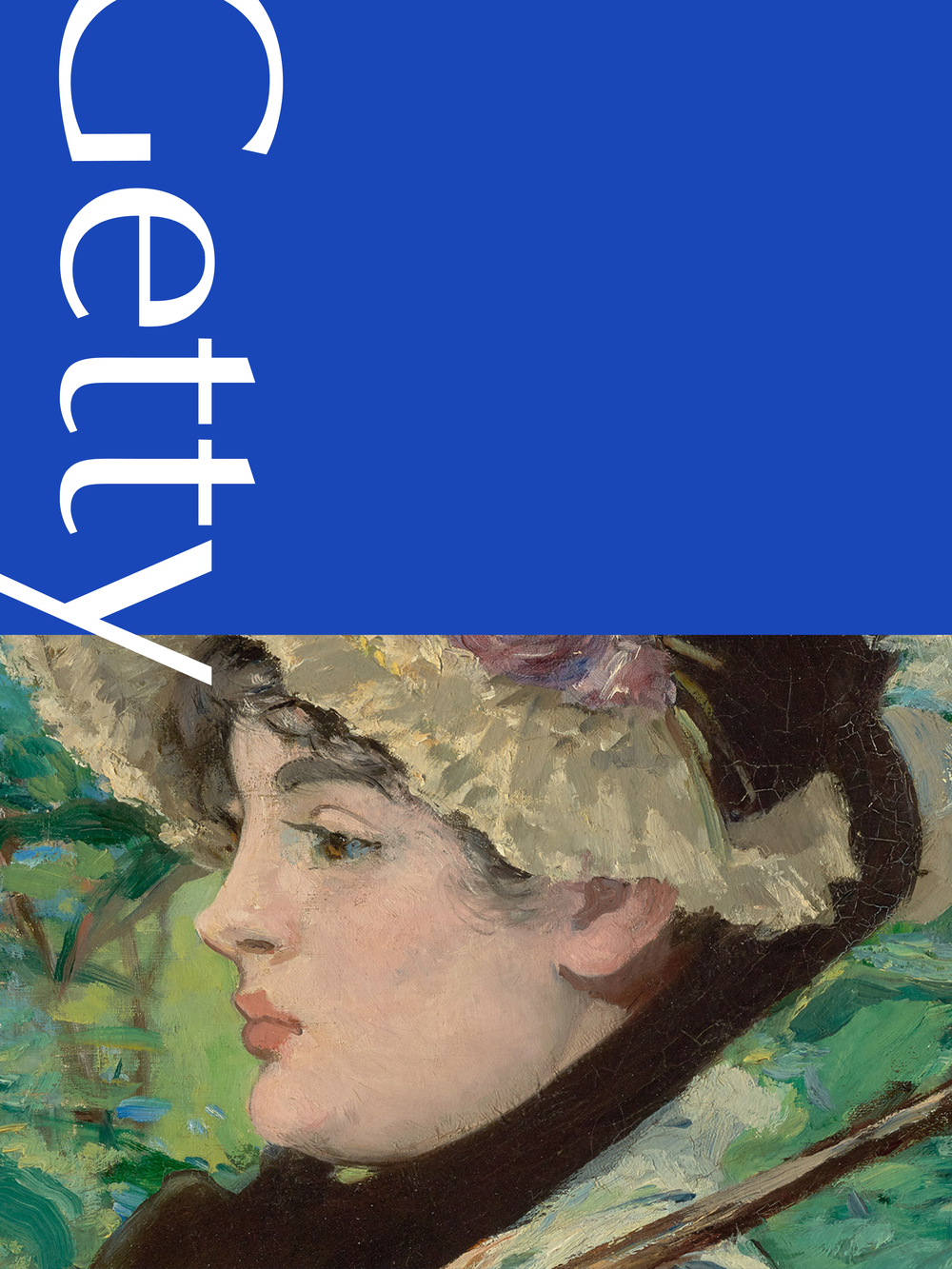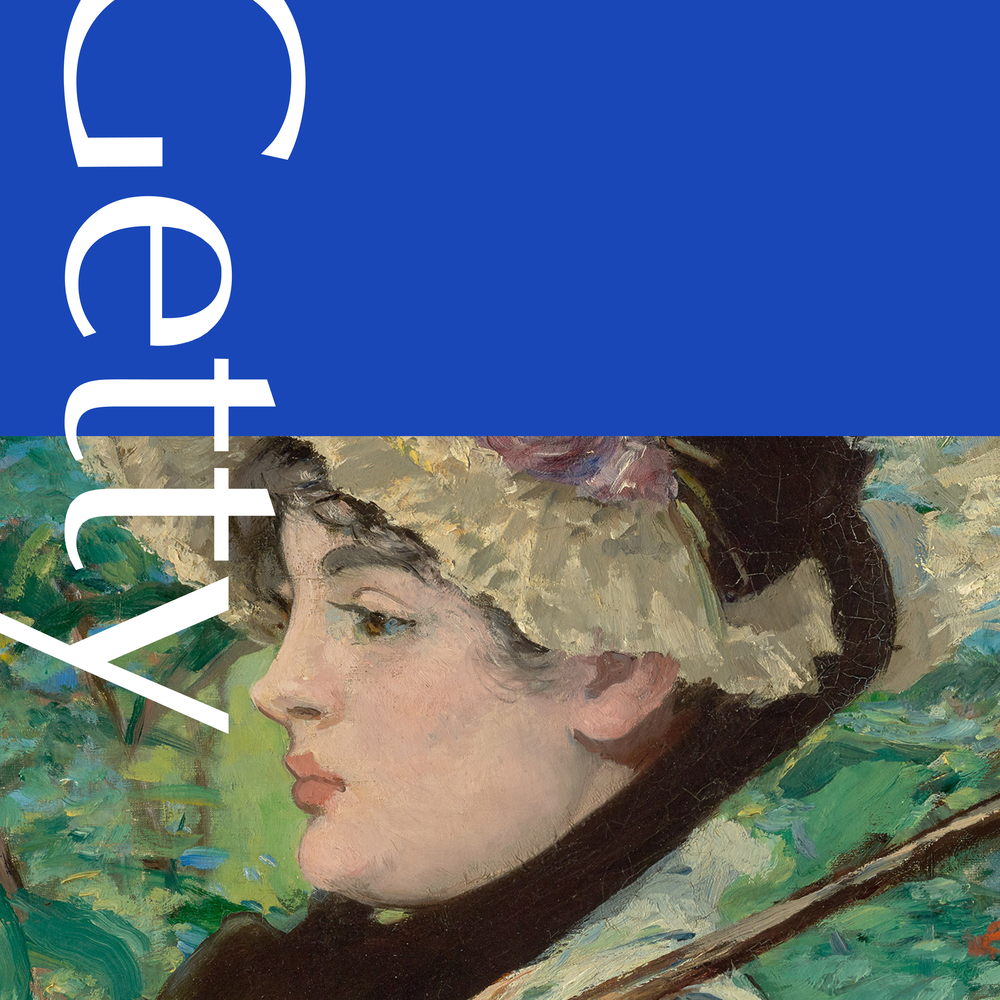 Fine Arts Museums of San Francisco
Fine Arts Museums of San Francisco
Fine Arts Museums of San Francisco
2022–2024
Encouraging engagement with art and ideas
The parent organization to two unique museums in San Francisco, the de Young and the Legion of Honor, the Fine Arts Museums of San Francisco (FAMSF) is one of the largest and most visited art institutions in the United States.
FAMSF approached AREA 17 to craft a website that amplifies a distinctive curatorial perspective informed by critical thinking, activism, and the Bay Area.
Applying a bespoke CMS from Twill as the central scaffolding, the site is a robust and accessible platform where FAMSF can promote programming and educational initiatives while sharing the breadth of its collection in ways that resonate with 21st-century audiences around the world.
Fine Arts Museums of San Francisco is made with Twill, our open-source CMS for Laravel.
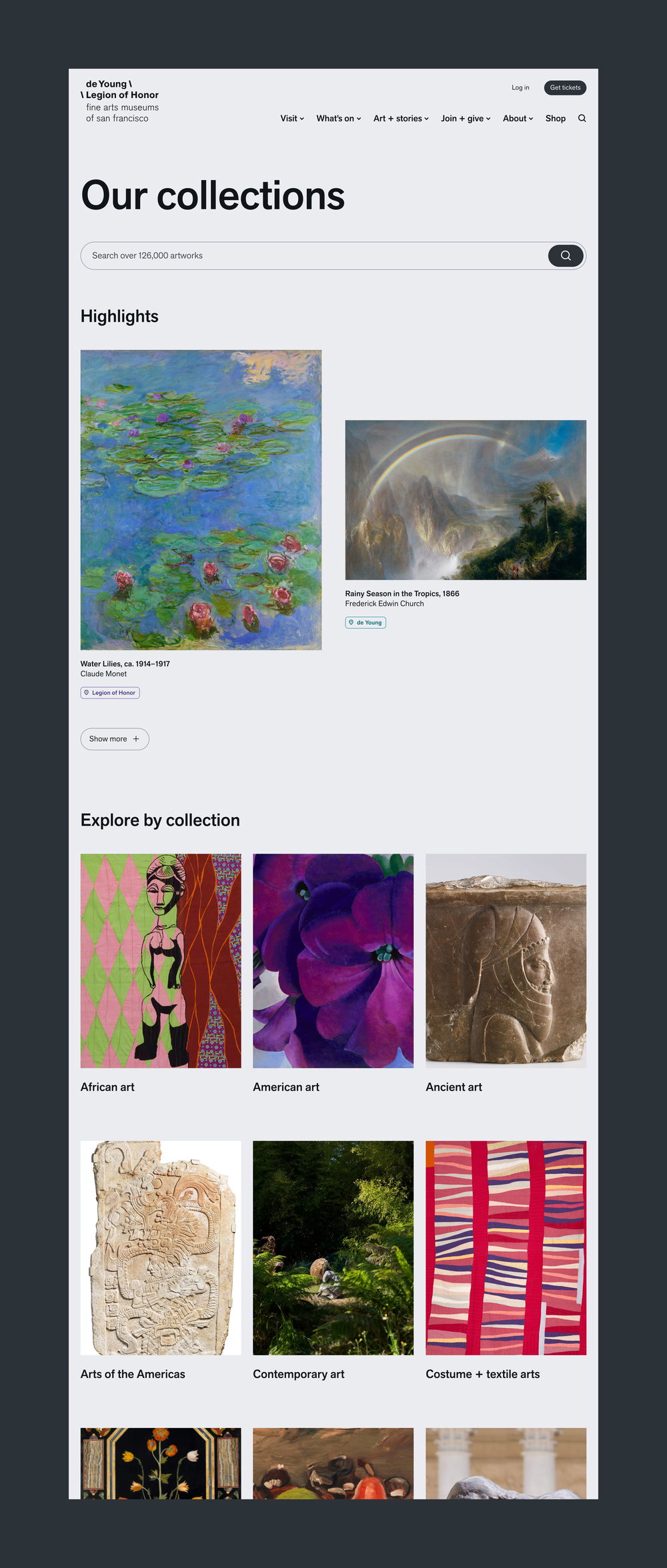

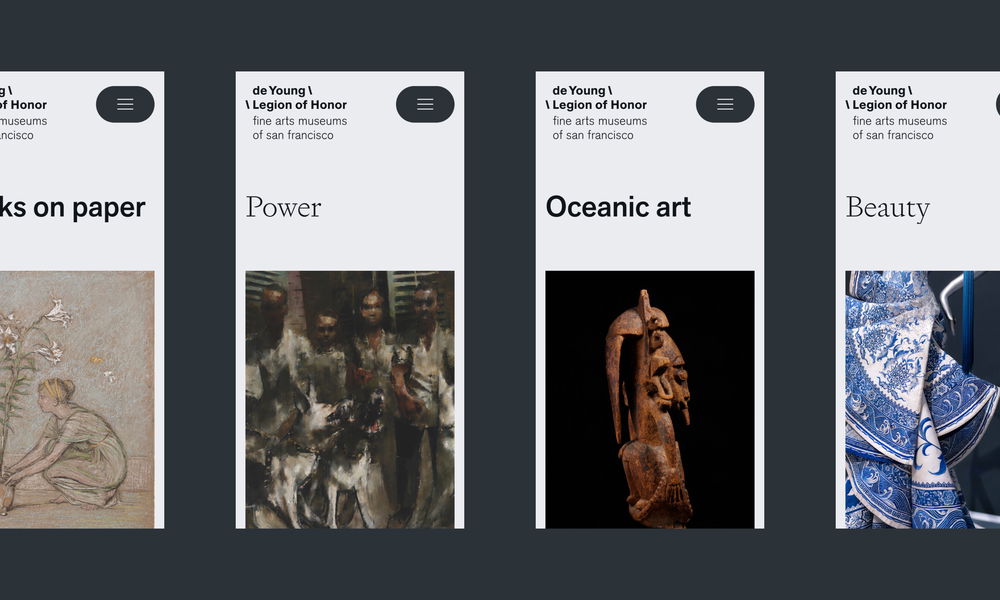
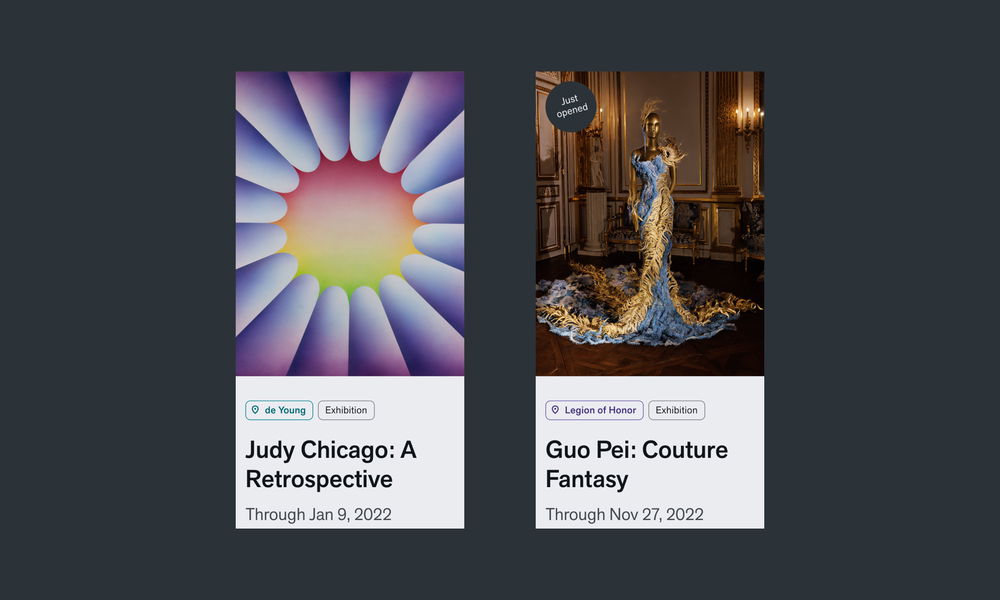
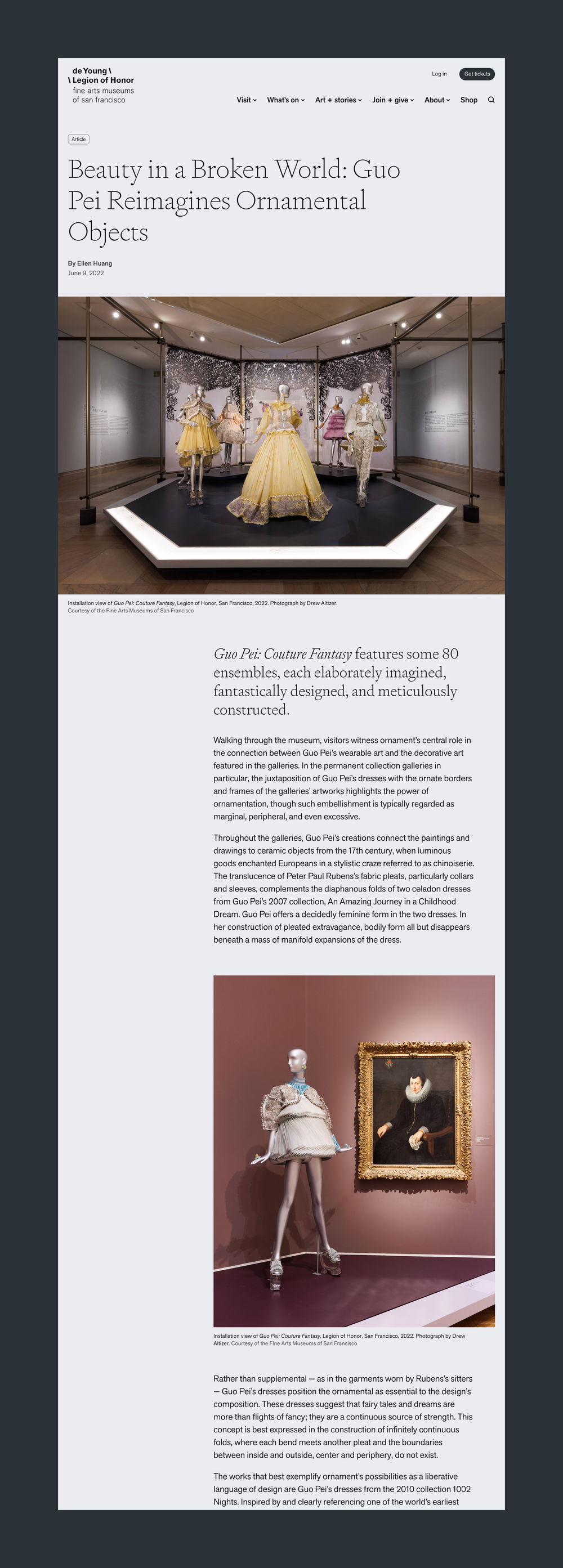
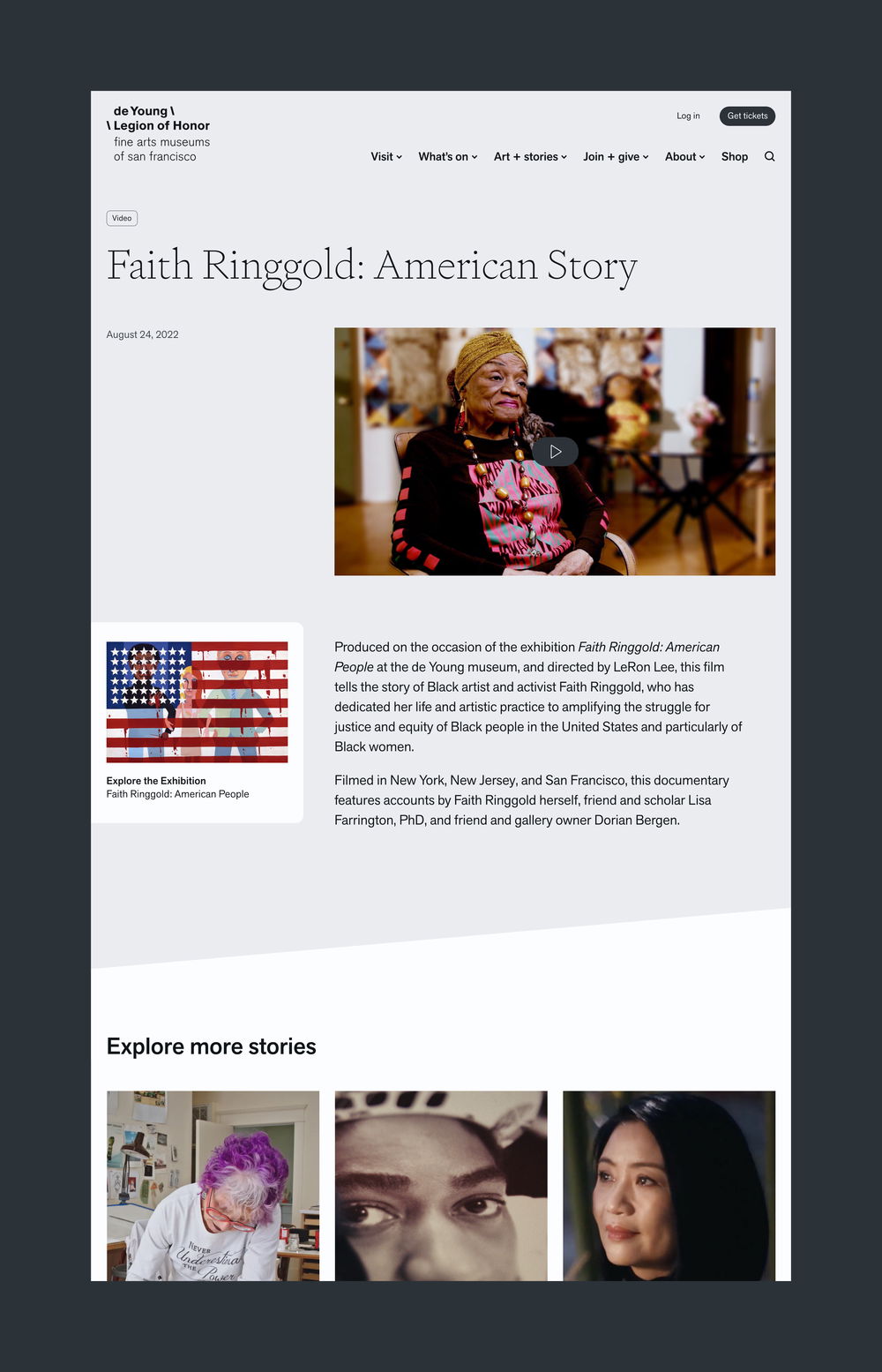
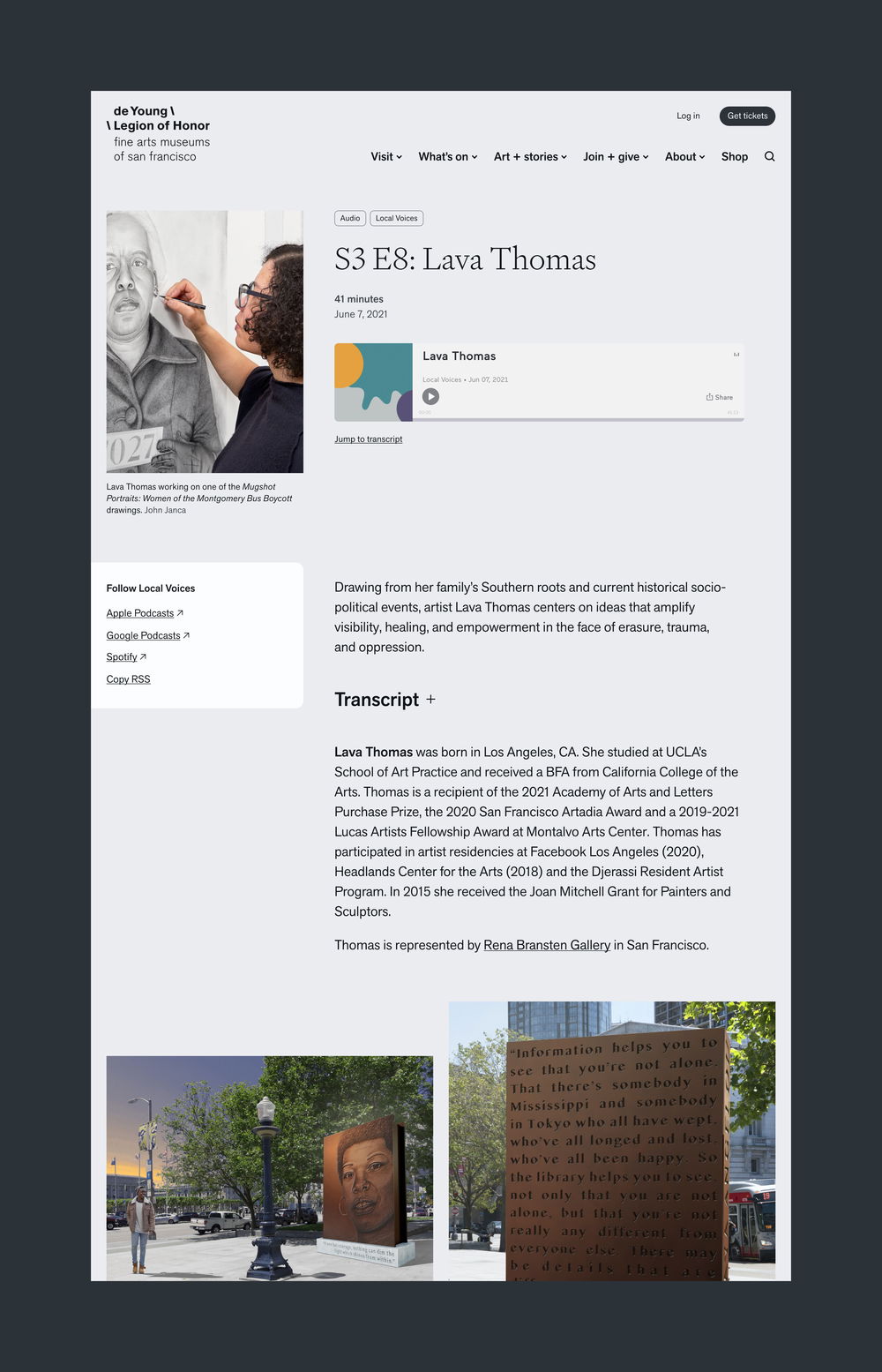


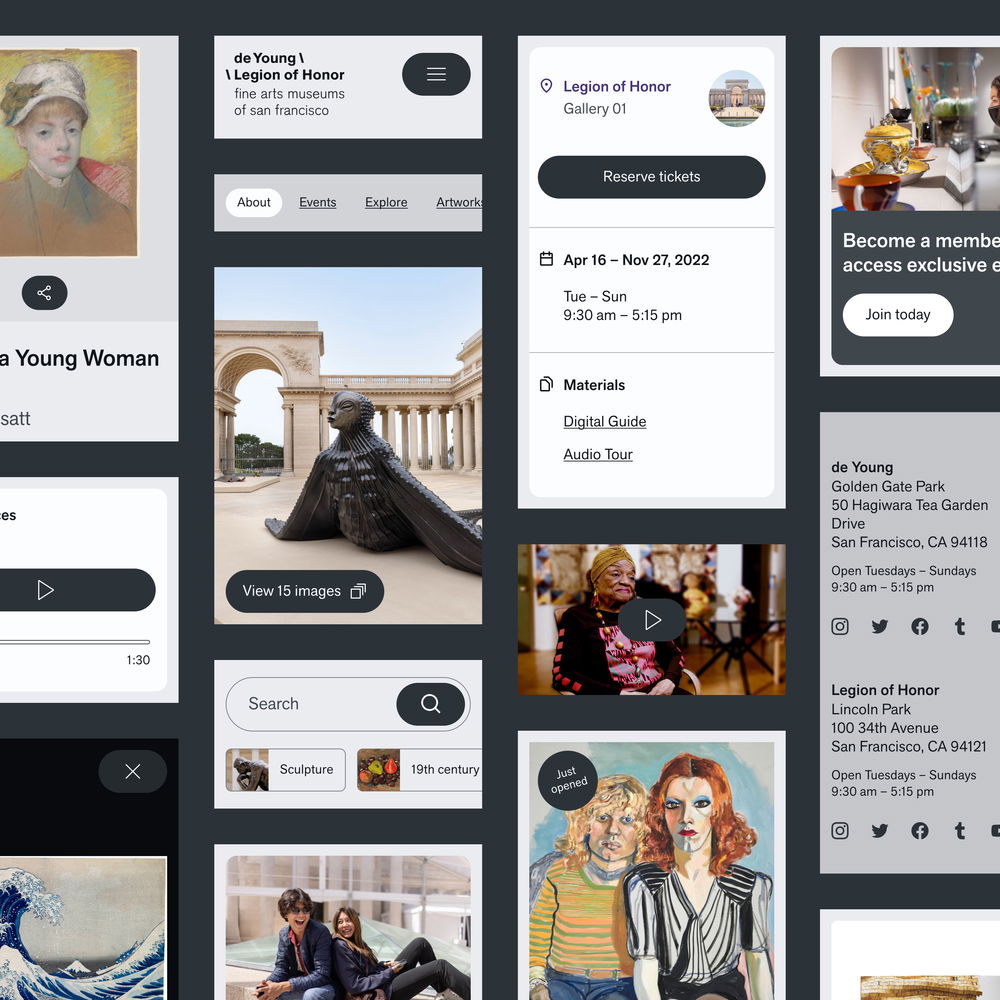
- Experience
- Research and analysis
- Experience vision and strategy
- Experience design
- Design systems
- Technology
- Technology strategy and architecture
- Custom application development
- Custom interface development
